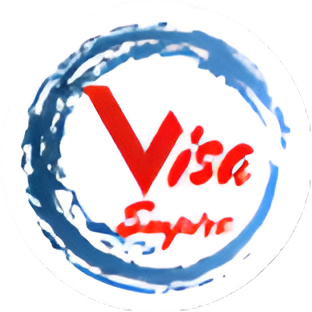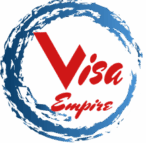Common Mistakes Employers Make When Nominating a Position for Skilled Visas

Nominating a position for a skilled visa in Australia is indeed a high-stakes process. Even one small mistake can lead to nomination refusals, visa delays, compliance headaches, and even costly corrections at times.
Numerous employers, particularly those who are new to the employer nomination visa system, fall into predictable traps. In this article, we’ll explore the most frequent skilled visa nomination errors, explain their consequences, and offer actionable tips to avoid them.
Let’s get started.
Understanding the Employer-Sponsored Visa Nomination Process
Before diving into the mistakes, it’s important to understand where the risks lie. When an employer nominates a position, they are effectively certifying the following to the Department of Home Affairs:-
- The business is genuine and financially capable.
- The nominated position is real and aligns with an eligible occupation under ANZSCO and relevant skilled occupation lists.
- The terms (salary, working conditions) meet the required benchmarks.
- The employer will meet ongoing sponsorship obligations.
Errors in any of the above-mentioned areas can derail a nomination. This applies across major visa streams; right from the 482 visa (or its replacement, the Skills in Demand visa) to the ENS / 186 visa pathway.
Top Mistakes Employers Make: Nomination Pitfalls
1. Choosing the Wrong Occupation or ANZSCO Code
One of the most common employer nomination visa mistakes is misclassifying the role. Employers sometimes try to stretch or force a job into an occupation where it doesn’t genuinely fit. They do so just to satisfy eligibility. This leads to a mismatch between role duties and the ANZSCO description that triggers refusal.
According to AIM Lawyers, sponsoring an employee under an incorrect occupation is a frequent error.
Also, refusal reasons often cite that “the employee’s occupation does not align with the necessary skilled occupation list … and the ANZSCO occupation code.”
Tip: One must carefully map the duties, and qualifications of the role to a suitable occupation code. If in doubt, consulting a migration expert needs to be done.
2. Inadequate or Improper Labour Market Testing (LMT)
For certain employer-sponsored visas, the employer must perform labour market testing (LMT). They must essentially demonstrate that the role was advertised and that no suitably qualified Australian or local worker was available.
Some common errors in this include:-
- Not advertising for the required duration (e.g. 28 days).
- Posting on non-approved job boards (i.e. platforms not acceptable under the rules).
- Failing to retain proper records (screenshots, advertisement proofs).
If LMT is not done correctly, the nomination can be rejected. This is because the employer failed to show a legitimate recruitment effort.
3. Salary and Employment Conditions Below Benchmark
Under employer nominations, the salary offered must meet the Temporary Skilled Migration Income Threshold (TSMIT) or relevant market rates, whichever is higher. Additionally, employment conditions must be fair and consistent with Australian workers in similar roles.
Mistakes over here include:-
- Offering a salary under TSMIT.
- Paying less than market value.
- Issuing a contract with non-standard terms (e.g. part-time, probation periods not acceptable).
The Department scrutinizes the above. Noncompliance with the aforementioned is a frequent skilled visa nomination error.
4. Poorly Drafted or Incomplete Position Descriptions
Even if you pick a correct occupation and salary, the nomination application must include a position description that clearly outlines duties, responsibilities, required qualifications, and reporting lines. A vague or generic job description can lead to doubts about the genuineness of the role.
One refusal practice is where the Department argues that the role is not “genuine” because of a lack of detail.
Tip: One must provide a detailed role duty matrix, breakdown of tasks, and how the role fits into the company structure.
5. Failing to Meet or Demonstrate Business Viability
The Department expects the sponsoring business to be operational, financially stable, and capable of supporting the position in the long term. Failing to provide sufficient business financials, turnover records, organisational charts, or proof of business activity is a common mistake.
Refusal reasons often include “failure to demonstrate that they are an operating business.”
If the business is new, one must make sure to gather supporting contracts, revenue projections, and evidence of capacity.
6. Inconsistent or Incomplete Documentation
In numerous cases, nominations are refused because of missing or inconsistent documents. Examples include:-
- Contracts without the nominee’s signature.
- Discrepancies between nomination and visa application forms.
- Leaving out supporting evidence (e.g. no proof of LMT, missing financial statements).
In one anecdotal case, a 482 nomination was refused because the employment contract lacked the nominee’s signature.
Thus, one must always cross-check every document and ensure consistency across forms.
7. Overlooking System Errors or Payment Issues
Even when your documentation is perfect, system errors or mistakes in fee payment can invalidate your nomination. For instance, if the visa application charge is not properly matched, the application may be treated as lodged late or even invalid.
Tip: After lodgement, one must confirm receipt, validate payment, and monitor the ImmiAccount status.
8. Ignoring Employer Sponsorship Obligations
Once the visa is granted, the employer is not off the hook. Compliance mistakes can lead to visa cancellation, fines, and blacklisting. Errors related to that include the following:-
- Not notifying the Department of changes (e.g. salary, role changes).
- Allowing the employee to work outside the nominated role.
- Not keeping proper employment records.
AIM Lawyers emphasises that ignoring ongoing obligations is among the key pitfalls.
9. Not Understanding Department of Home Affairs Refusal Reasons
Sometimes the root issue is a lack of awareness of common refusal grounds. The Department’s decision letter often lists reasons such as:-
- Role not being genuine
- Insufficient evidence of business operations
- Inadequate LMT
- Inconsistencies in paperwork
By knowing these upfront, employers can proactively address vulnerabilities before submission.
Consequences of Nomination Errors
Getting the nomination wrong can have some serious consequences. Those are as follows:-
- Nomination refusal: The entire visa application may be refused or held in abeyance.
- Visa delays: Even correctable errors may result in long processing wait times.
- Compliance risk: Breaches of sponsor obligations may attract penalties or disqualification.
- Financial cost: Reapplications, legal costs, and business disruption.
- Reputation risk: Poor performance or refusal records may impact future nominations or audits.
In numerous refusal scenarios, employers attempt a nomination review or litigation. However, these avenues come with strict time limits and costs.
How to Avoid Employer Sponsorship Visa Mistakes (Best Practices)
Here are some recommended steps to mitigate risks and improve your chances of a successful nomination:-
- Engage a registered migration agent or specialist early
Having experienced guidance can flag pitfalls before they happen.
- Map and justify the role properly
One must match duties clearly to the ANZSCO code and the relevant occupation list. Drafting a detailed position description is imperative.
- Conduct LMT properly and retain evidence
One must run advertising for the required duration, use approved job boards, and archive all proof.
- Benchmark salary and secure compliant employment terms
One must use up-to-date market data and ensure terms don’t disadvantage the nominee.
- Provide robust business and financial evidence
One must use audited accounts, contracts, turnover statements, and proof of viability.
- Perform rigorous document checks
One needs to ensure all fields are filled, signatures are in place, cross-consistency, and no omissions.
- Monitor payment and system receipts
One must confirm the visa charge is processed, check receipts, and monitor ImmiAccount status.
- Stay compliant during employment
One must update the Department for any changes, maintain records, and enforce role boundaries.
- Be proactive about refusal grounds
One must review common Department of Home Affairs nomination refusal reasons ahead of submission and preempt them in your nomination.
The aforementioned practices greatly mitigate the chance of skilled visa nomination errors or nomination refusal.
Final Thoughts
The pathway to sponsoring a skilled worker brings immense opportunity for businesses. However, it also demands precision, compliance, and foresight. Mistakes in nomination can certainly set back one’s plans by months, if not years.
At Visa Empire, we specialise in navigating this complex terrain. As one of the best migration agents in Perth, we partner with employers to:
- Audit nomination documents
- Map roles to correct ANZSCO codes
- Ensure LMT compliance and retention
- Structure employment terms and salary benchmarks
- Guide on ongoing sponsorship obligations
Let our best visa agents take the risk off your shoulders. Contact Visa Empire today to get your employer nomination right the first time. Secure your skilled visa success with confidence with us by your side.
Frequently Asked Questions (FAQs)
1. Are mistakes in visa applications common?
Yes, mistakes in visa applications and employer nomination visa submissions are quite common. This is particularly true for first-time sponsors or those unfamiliar with the employer-sponsored visa process. Errors often arise from incorrect occupation selection, incomplete documentation, or failing to meet sponsorship visa employer requirements.
Even minor oversights, such as missing attachments or inconsistencies between forms, can lead to significant skilled visa nomination errors or refusals by the Department of Home Affairs. Working with experienced visa agents like Visa Empire can help ensure every detail is compliant and complete before submission.
2. Why would a skilled worker visa be refused?
A skilled worker visa can be refused for several reasons. Those include:-
- Incorrect occupation nomination or ANZSCO mismatch
- Inadequate labour market testing (LMT) evidence
- Salary or employment conditions below the required benchmarks
- Incomplete or inconsistent documentation
- Employer failing to meet sponsorship obligations or demonstrate genuine business activity
The reasons behind the Department of Home Affairs nomination refusal often highlight a lack of genuine need for the position or non-compliance with eligibility requirements. Understanding these pitfalls early can prevent 186 visa nomination problems, 482 visa nomination issues, and other ENS visa nomination errors.
3. What can you not do on a skilled worker visa?
Holders of a skilled worker visa in Australia are bound by specific conditions. They cannot:-
- Work for any employer other than their approved sponsor
- Perform duties outside the nominated occupation
- Work in a different location without Department approval
- Violate Australian workplace or visa conditions
Employers must also adhere strictly to employer sponsorship obligations, ensuring that visa holders are engaged only in approved roles and under compliant terms. Breaching these rules can lead to cancellation of both the employer sponsorship visa and the worker’s visa.



